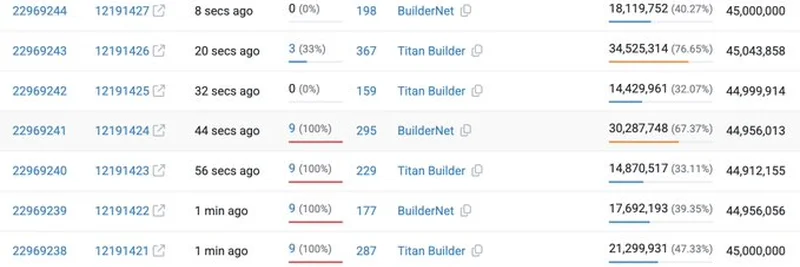Hey there, crypto enthusiasts! If you’ve been keeping an eye on the Ethereum network, you’ve probably noticed some exciting changes lately. A recent tweet from storm on July 21, 2025, dropped a bombshell about the Ethereum gas limit roadmap, and it’s got everyone buzzing. Let’s break it down in a way that’s easy to digest, even if you’re new to the blockchain game.
What’s the Gas Limit All About?
First things first—let’s talk about the gas limit. In Ethereum, “gas” is like the fuel that powers transactions and smart contracts. Every time you send ETH or interact with a decentralized app (dApp), you pay a gas fee. The gas limit is the maximum amount of gas you’re willing to spend per transaction or block. Think of it as a cap to keep things running smoothly and prevent network overload.
The tweet highlights a key milestone: as of July 2025 (that’s right, now!), the gas limit has hit 45 million. This is a big jump from the 30 million limit back in 2021 and the 36 million in early 2025. But that’s just the beginning—Ethereum is gearing up for even bigger things!
The Roadmap Unveiled
Here’s the juicy part of the roadmap shared by storm:
- 2021-Q3: 30M (the starting point)
- 2025-Q1: 36M (a smooth transition)
- 2025-Q3: 45M (we’re here today!)
- 2026-Q1: 100M (with ModExp repricing)
- 2026-Q2: 300M (thanks to ePBS)
So, what do these numbers mean? Increasing the gas limit allows more transactions to fit into each block, making the network faster and more efficient. The jump to 100 million in early 2026 will come with a tweak to the ModExp (modular exponentiation) pricing, a technical upgrade that makes complex calculations cheaper. Then, by mid-2026, the introduction of ePBS (enshrined Proposer-Builder Separation) could triple the limit to 300 million. That’s a game-changer for scalability!
Why It Matters
You might be wondering, “Why should I care?” Well, a higher gas limit means lower fees and faster processing times—music to the ears of anyone using Ethereum for DeFi, NFTs, or meme tokens! It also sets the stage for Ethereum to handle more users and dApps without breaking a sweat. For blockchain practitioners, this is a golden opportunity to build more robust applications.
The tweet’s attached image shows real-time data with blocks hitting close to the 45M limit, proving the network is already adapting. You can see the gas used fluctuating between 18M and 34M, with some blocks maxing out at 100% capacity—clear signs of growing demand.
What’s Next?
The community’s reactions in the thread are electric. Some folks are hyped about the 300M potential, with one user suggesting zkVM (zero-knowledge virtual machine) might be the key to getting there. Others are debating whether intermediate steps, like a 60M limit, might happen before the big 100M leap. Storm even threw in a fun GIF from The Office to keep things light!
This roadmap isn’t set in stone, though. Ethereum’s core devs will likely adjust based on network performance and security. If you’re into meme tokens or blockchain development, keep an eye on updates—sites like meme-insider.com will be tracking these changes to help you stay ahead.
Final Thoughts
The Ethereum gas limit roadmap for 2025-2026 is a peek into the future of a more scalable blockchain. From 45M today to a potential 300M next year, it’s an exciting time to be in the crypto space. Whether you’re a developer cooking up the next big dApp or just hodling your favorite meme coin, these upgrades could unlock wild possibilities. What do you think—ready for the gas pump to go full throttle? Drop your thoughts in the comments!


